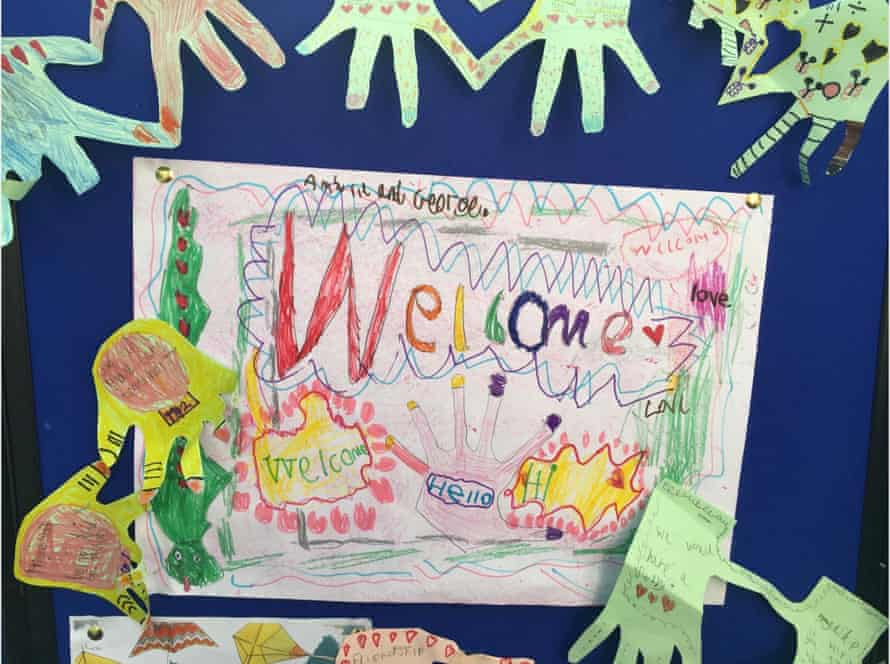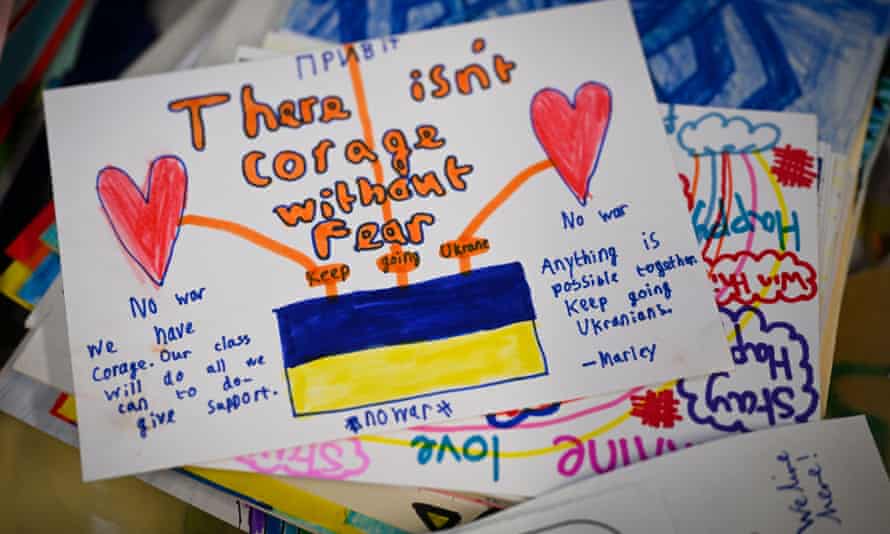“Children pick up whether someone cares about them even if they don’t speak the language,” says Kulvarn Atwal, a headteacher in east London. Atwal, who has plenty of experience of welcoming children who are refugees from conflict, is preparing for the arrival of new pupils from Ukraine.
Children connect with each other much faster than adults do, he says. “Sometimes we look at children through the eyes of adults, but they don’t see what adults see. They haven’t developed discriminatory biases so they just dive straight in.”
As the summer term begins, many schools are preparing to welcome children who have fled Ukraine after the Russian invasion. For some schools, particularly in rural areas, it could be their first experience of teaching refugees.
Atwal has told his local council he will take “as many Ukrainian children as possible”, to Uphall primary, his school in Ilford, where 60 languages are spoken, to make use of the school’s experience. He says he also wanted “to send an important message to our children that we are doing something”.
For children who arrive speaking no English, often after traumatic experiences, starting a new school in a new country is daunting. But they typically go on to thrive. The education secretary, Nadhim Zahawi, himself arrived aged nine from Iraq speaking no English. How do teachers manage to help such children to adapt and make progress?
“As soon as they get here, we give them a buddy, another student, who supports them all day long,” says Atwal. “Everyone wants to volunteer. If they walk into a classroom and children are fighting to look after them; they love that.”
Uphall employs an emotional literacy adviser, who helps children who may have suffered trauma. If a child does not speak much English the adviser will use picture cards showing an angry face and ask: “Do you ever feel like this?”
Atwal emphasises that each child needs to be treated as an individual. Some will be very quiet at first, taking it all in, “but that doesn’t mean they don’t feel safe”.
“Many children who have fled a country come from very educated backgrounds,” he says. “We see groups of refugees in the press, but every child has their own story.”
In January, a month before the invasion of Ukraine, Atwal heard about a large number of refugee children housed in a bed and breakfast nearby. He offered them places and invited the families in to meet him. They did not speak English and were “clearly traumatised” by what they had experienced. Some of the parents were disabled as a result of war. With no access to public funds, none could afford bus fares to school.
For most of these uprooted families Atwal says the practical challenges of getting their children to school each day were too much. But a handful of children joined, and he says they have settled in happily.
Teachers preparing to welcome new Ukrainian children are sharing advice on social media, and requests for help from small charities, like the Schools of Sanctuary network, are mushrooming.
Oliver Wilson, head of Woodhouse primary school, part of the University of Wolverhampton multi-academy trust, says: “The biggest thing is the warm welcome.”
Wilson’s school has enrolled children who have fled Syria, Afghanistan, Iraq, Iran and the Congo. Before the children start, he invites the family to come into school to meet him and his team. An interpreter will be there to help, often a member of a family already at the school. Wilson is always mindful the new family may have had “a horrific journey” and “witnessed terrible things”. A small thing like making sure to smile can help, he says.
Before a new refugee joined recently, a child from the same country knocked on his door and asked if she could show her around. “Her whole family offered support, giving a great welcome, because they knew what it felt like to be new,” Wilson says.

The school has an expert English as an additional language [EAL] teacher, something many schools now lack because of funding cuts in the past 10 years. One thing that works well is using the doll’s house: a chance to learn practical everyday words by pointing at objects and playing. Wilson says: “You can’t just put them in a class in a totally new system and language and expect them to flourish. We give them time, adult conversation and the opportunity to develop confidence.”
Wilson says once the children have been given time to settle, start to learn the language and begin to overcome challenges such as bereavement or PTSD, they “can really fly academically”. But he says what matters most is that they find school a safe and welcoming place.
In March, a video of an entire Italian school clapping as their two new Ukrainian classmates arrived went viral on social media, with many people saying it moved them to tears.
But Megan Greenwood, coordinator for the Schools of Sanctuary programme, urges caution. “A big fanfare welcome is not necessarily going to be helpful for someone who is very new to the country and feeling unsettled.”
Her advice: “Don’t bring a newly arrived child on to stage in assembly.” She suggests smaller, “less conspicuous” gestures, such as putting up signs written by classmates in Ukrainian.
The Schools of Sanctuary scheme has recognised 341 nurseries, schools and sixth forms in the UK for supporting children who have had to flee and educating others about their situation. Greenwood describes one student arriving at a sixth form college recently during a day of solidarity for Ukraine. “They didn’t announce that he had come from there, but he was really touched when he turned up and there were yellow and blue flags everywhere.”

Helen Giblett, head of Archbishop Benson primary school in Truro, says her pupils have each planted a sunflower, Ukraine’s national flower, to show the Ukrainian children joining the school that they are “ready to welcome and support them”.
The school took in Syrian refugees a few years ago and Giblett says some of those children are now raising issues to do with their experience because the war in Ukraine has brought them to the fore. “We focus on listening,” she says. “Often children won’t even realise they are receiving special support, which might be through drawing or talking.”
Greenwood says these children need a “safe person” on the staff who they can always turn to, as well as a safe space in which to decompress. Some schools have a teacher who leads on refugee support. “If a child puts up their hand in class and says they want to see this teacher, all members of staff understand what that means,” Greenwood says.
Lack of English is one of the most obvious obstacles. The Bell Foundation, a language education charity, runs webinars on welcoming refugees and is offering training and free resources to schools taking Ukrainians. Silvana Richardson, the charity’s strategic education adviser, says children need English language support for six years. “It should be in the classroom as much as possible, so children socialise with their peers.”
She advises schools to teach children some basic emotional language early on, “so that they can tell someone when they are tired, sad or need some time out”.
Jasmine Kay, a year 6 teacher at Wood Ley primary school, Stowmarket, which has just applied to become the first sanctuary school in Suffolk, says that being immersed in a new language can be exhausting. “Allowing brain breaks and additional time to play and relax can be essential.”
Kay’s pupils recently made cards for local refugee families. She points out that welcoming new children offers a chance for schools to talk about migration and why diversity is a strength, as well as making pupils consider how they would feel if they had been the ones forced to flee. “We should show solidarity to our fellow human beings and treat them as we would like to be treated if the roles were reversed,” she says.
Sign up to First Edition, our free daily newsletter – every weekday morning at 7am

